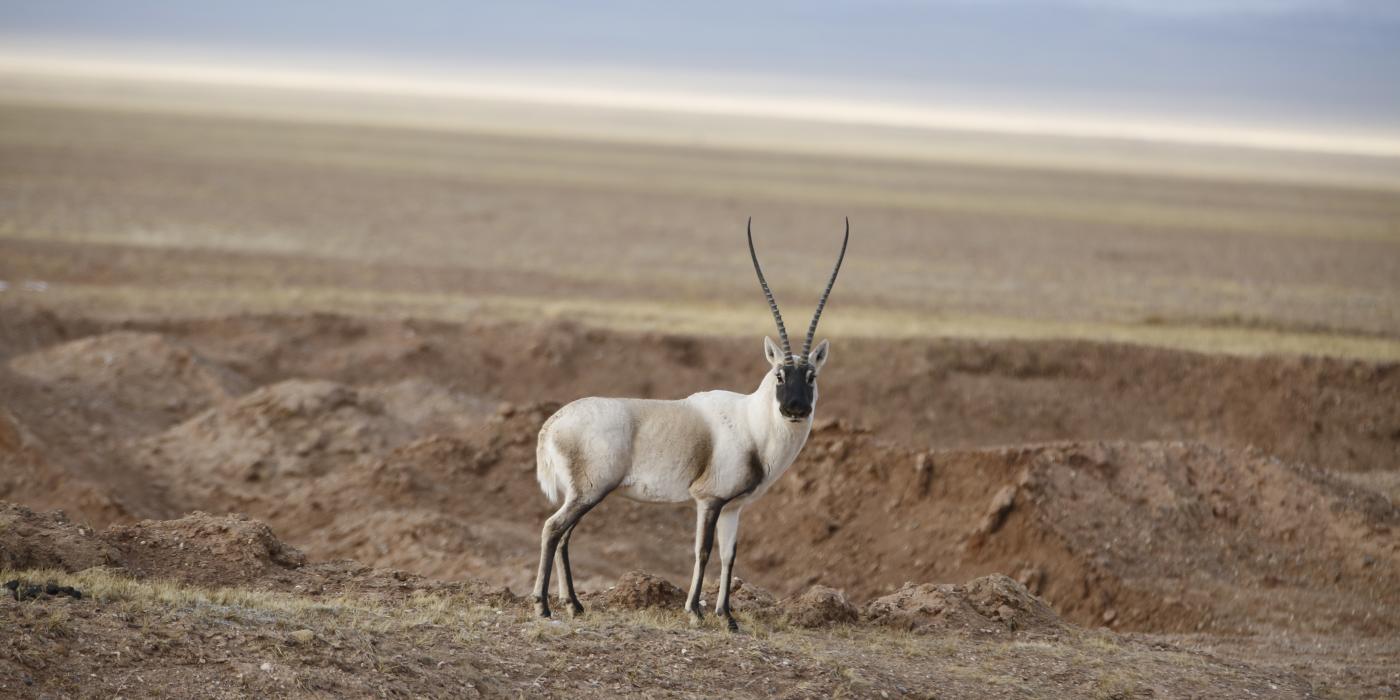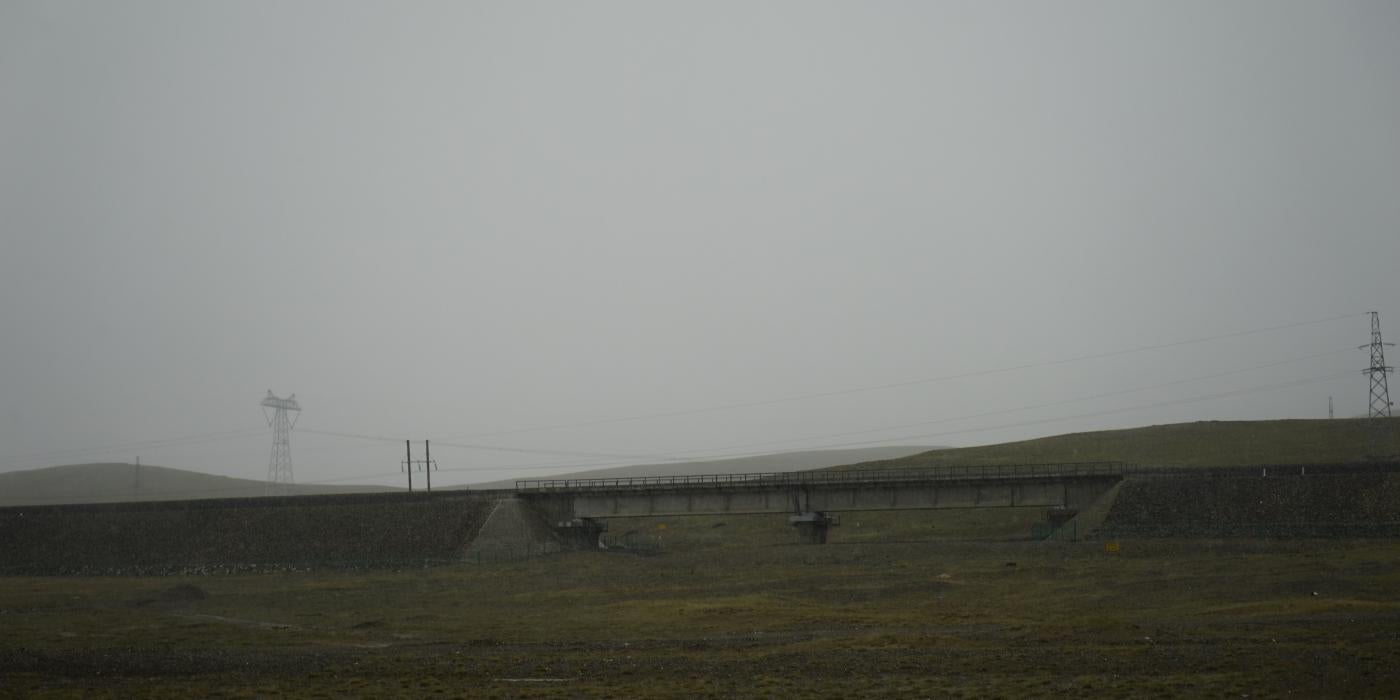Chinese Railway Underpass Prolongs Tibetan Antelope’s Migration
In a rural area of west China, the highest railroad on earth transports visitors from Qinghai to Tibet (QTR). This railway is also the first in China to incorporate wildlife crossings into its design. The engineering of the railway was challenging, though, because of the high altitude and permafrost covered land.
The region that the railway passes through is filled with a diverse array of wild animals. However, its limited accessibility has left many of the species living there understudied. In a paper published on Plos One, Smithsonian Conservation Biology Institute (SCBI) scientists, along with Rakuno Gakuen University in Japan, were the first to look at the Tibetan antelope’s migration patterns using scientific data from GPS tracking collars.
The Tibetan antelope is an iconic species to the area. The antelope migrate from their winter sites in the Sanjiangyuan Nature Reserve to their shared calving, or birthing, site in the Hoh-Xil Nature Reserve every year.
The QTR runs down the middle of these two reserves, cutting the antelope off from getting from one site to the next. While underpasses allows for wildlife to cross under the railway, the scientists wanted to know if the underpasses prolongs the journey.
In order to find out, the scientists first needed to learn about the antelope’s travel routes. Since no data had been collected prior to the railway’s construction, the scientists had to create a model based on satellite tracking data they collected.
The data revealed that antelope were taking the most direct routes,but made gradual detours to use the underpass.
In other words, the antelope were traveling from one site to the other on a route that required the least amount of energy until they approached the QTR.
By fencing the railway, the antelope were forced to only cross at underpasses. Scientists observed the antelope approaching the fence and then following it along until they reached the Wubei wildlife underpass. Travelling to the Wubei underpass detours the antelope 86.19 kilometers, or 53.56 miles, off their preferred course. The prolonged journey can have severe effects on the animals’ overall fitness, or health.
Tibetan Antelopes’ migration is especially unique because it is closely linked to their reproductive cycle. Only females, usually pregnant ones, make the journey to the calving sites and then the calves travel with them back to the winter sites.
By prolonging a tightly synchronized journey, the antelope use more energy, and take more time. This could cause females to give birth before they reach the calving site and decrease the chances that a calf will survive the return trip.
While this study did not measure the species’ overall fitness, the scientists were able to come to some conclusions based on research done on other ungulates (hooved animals).
While the railway does contain other crossing points, 95 percent of antelope use the Wubei underpass. This is most likely because the other crossings present perceived threats to the antelope, such as elevated water and human activity.
One of the authors of the study, Wenjing Xu, an ecology fellow at the Smithsonian Conservation Biology Institute and doctoral student at the University of California, Berkley, said building overpasses may help the antelope migrate without having to change their routes dramatically, but scientists will likely need do more scientific tracking studies. Antelope do not like to cross under roads and railways, they prefer to cross over them because they can see the landscape. An overpass may also help the structural integrity of the QTR, since building something under the railway can affect the base of the structure.
Xu and her research partners would like to collect additional and more accurate data on even more species than just the Tibetan antelope
“I hope that scientists can study and understand the diverse array of wildlife before they’re gone,” she said.
This story appears in the April 2019 issue of Smithsonian Conservation Biology Institute News. Co-authors on the paper include Qiongyu Huang, Jared Stabach, Hoshino Buho and Peter Leimgruber.


